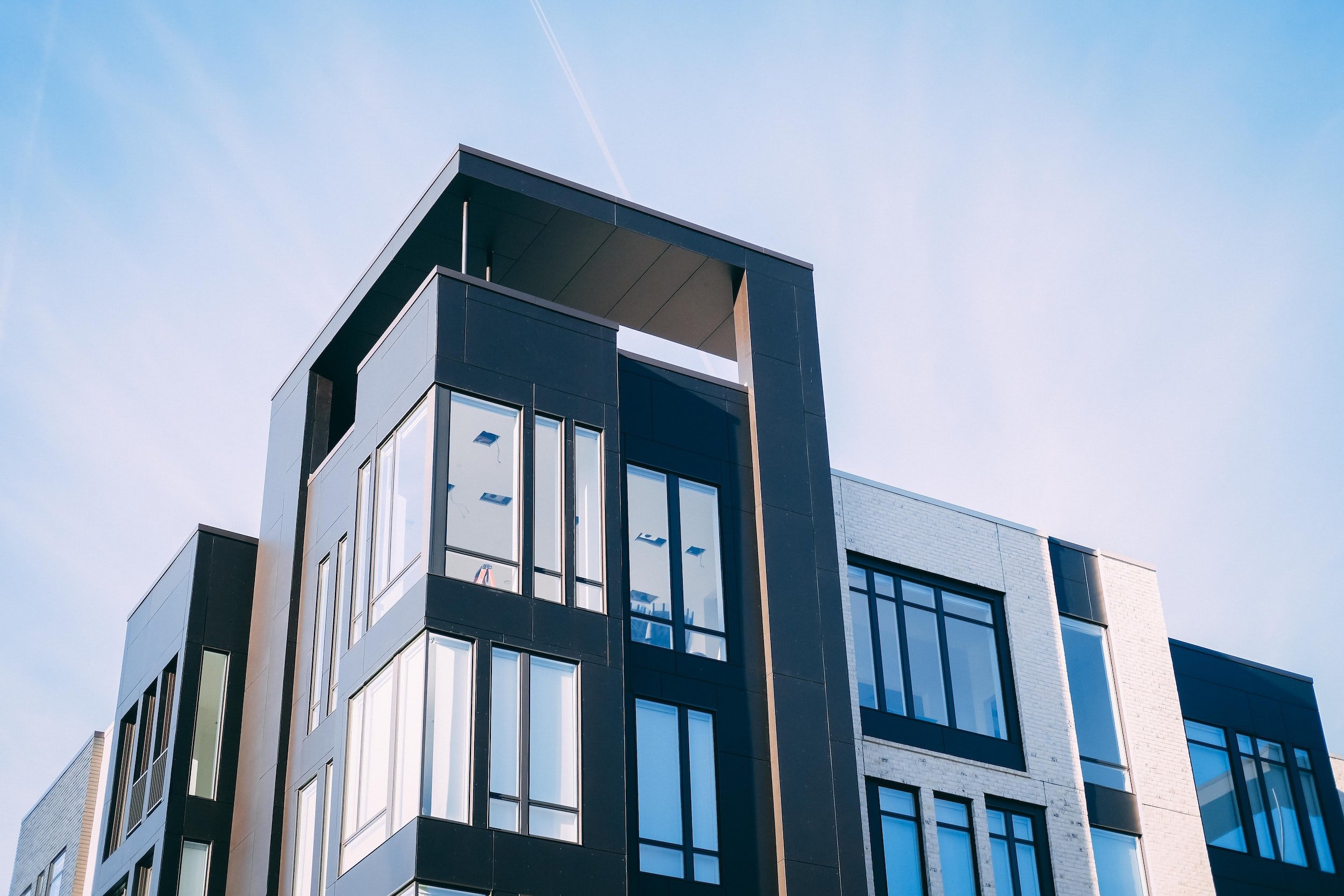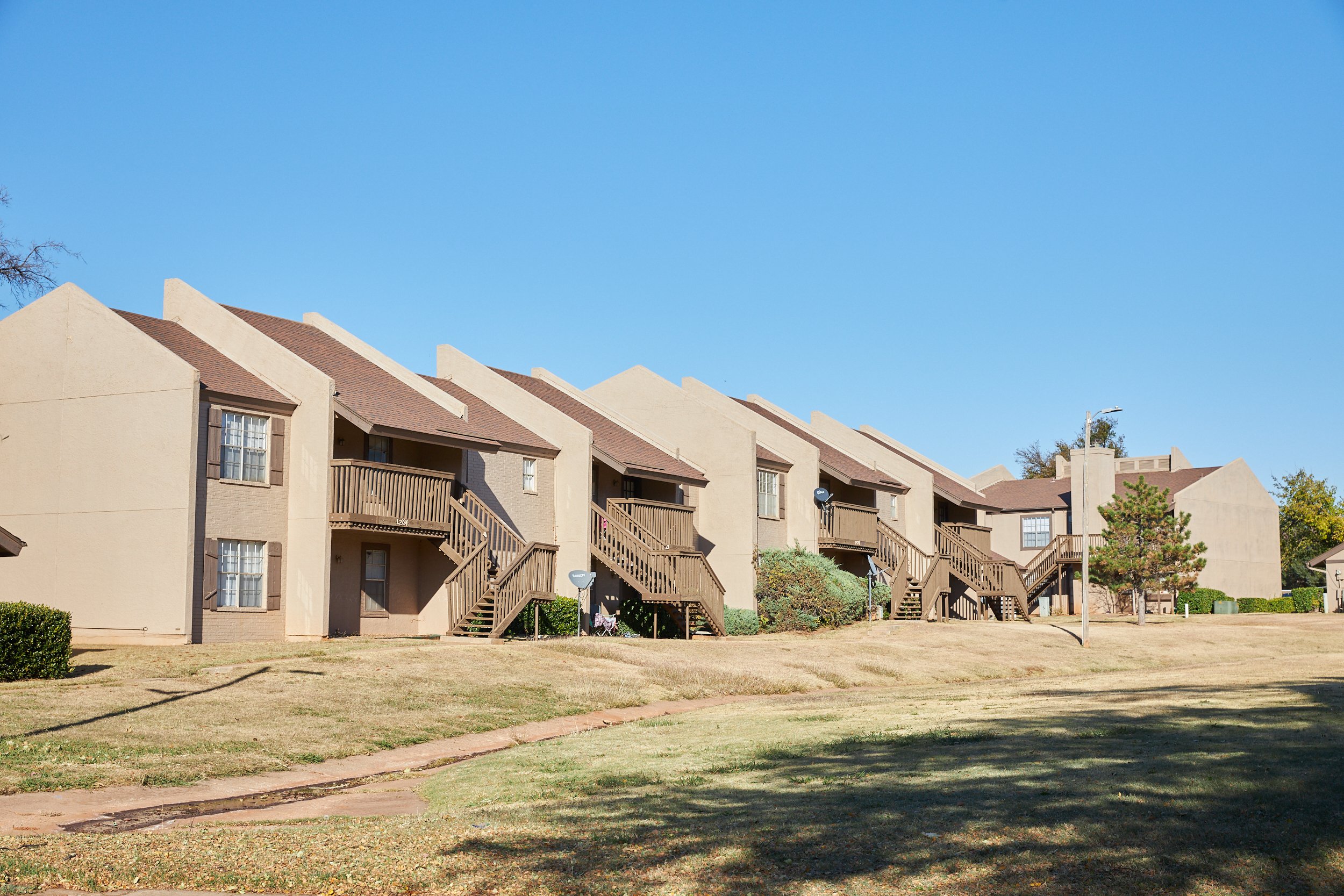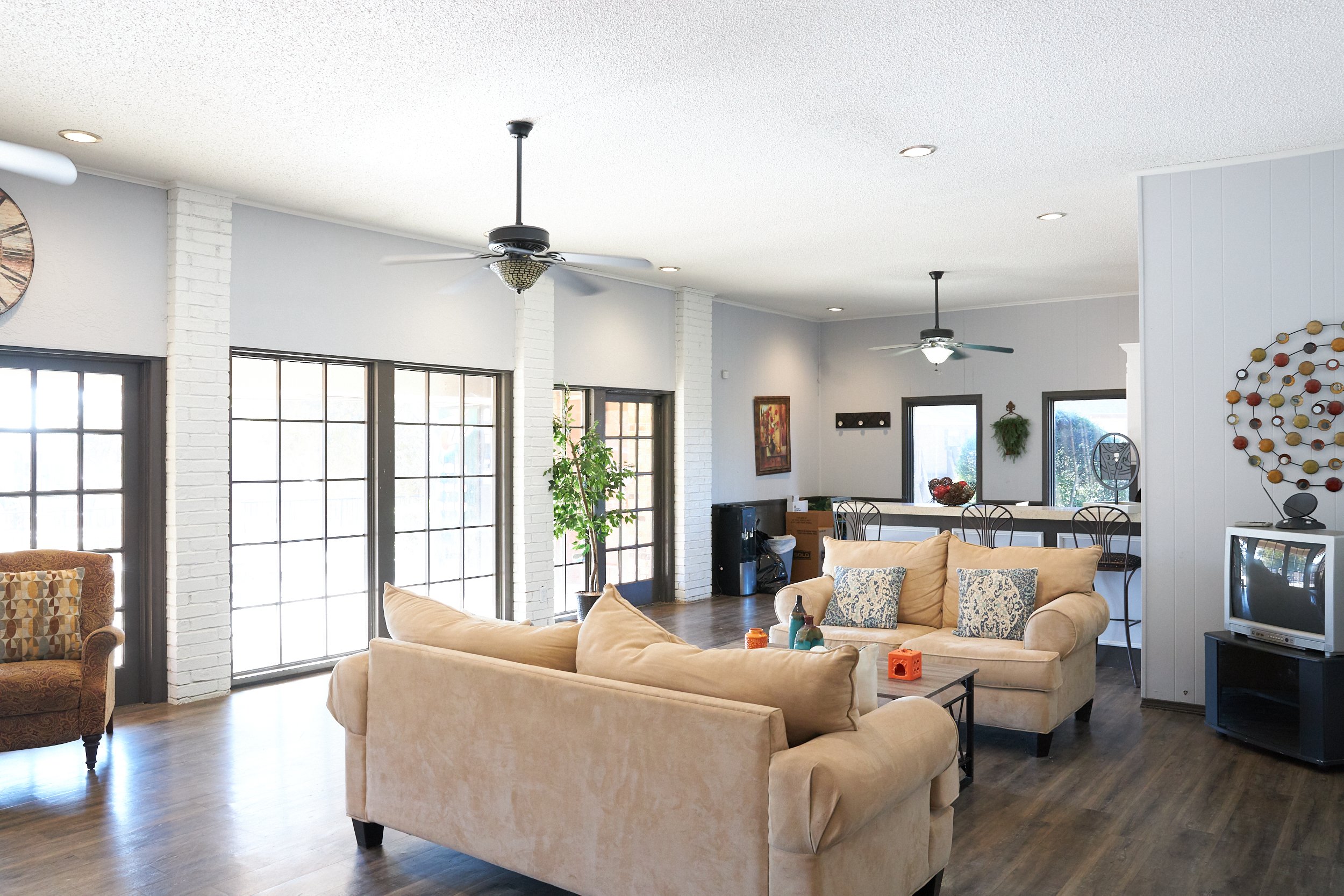
Aspen Place
LP Equity Offering
360-Unit Value-Add Multifamily Property in Oklahoma City
Private 506(C) Offering for Accredited Investors
Asset Type:
Multifamily
Investment Objective:
Income & Growth
Target LP Equity Multiple:
1.58x
Target LP IRR:
14%-15.50%
Hold Period:
5+ Years
Investment Minimum:
$50,000
Total Equity Raise:
$16,700,000
Purpose for Offering:
Equity Recap
Invest for Growth, Stay for Income
-
The sponsorship team plans to execute a value-add renovation plan and improve property operations that they believe will increase NOI and generate additional cash flow upon stabilization. This investment opportunity is expected to achieve 15.46% IRR over 5 years and deliver increasingly strong cash distributions beginning in 2023 when the property is stabilized.
-
It is important to have a diversified investment portfolio, and many experts believe as a rule of thumb that 5% to 10% of a portfolio should be allocated to real estate. It is important to consult with a qualified financial advisor to understand what will work best for your investing goals and needs. Investing as a limited partner in real estate funds can be a good option for accredited investors who prefer a passive, no-hands approach to investing, or who want to buy real estate but either do not have the expertise or the time to manage it.
-
As of November 16, 2022, the property is financed with 45% LTV senior debt at a fixed interest rate of 5.50% with maturity in January 2024 and two 1-year extension options. This leverage significantly reduces interest-rate risk in the deal.
The sponsorship team is evaluating a possible refinance in Month 13 to 60% LTV, permanent, fixed-rate debt at 6.50%.
-
For decades, stocks and bonds have worked in concert to balance investors’ portfolios: When one went up, the other went down, a dance that inspired the 60/40 portfolio. While it worked well for decades, it’s stumbling today. Rising interest rates and high inflation have led stocks and bonds to rise and fall in unison, diminishing returns.
But multifamily real estate, one of the few asset classes to defy today’s brutal market volatility, offers investors a way to build and preserve wealth. Multifamily real estate has emerged as one of the strongest alternative assets. Overall, multifamily continued a more than 40-year pattern of generating the highest average returns among real estate asset classes in 2021 and year-to-date 2022. This is a trend that will likely continue for years to come due to low supply of rental units and homes for sale. Uncertainty in equity markets is drawing investors to the stability of multifamily real estate. With inflation running at an approximate 7.5%+ annual rate thru October 2022, housing is holding its value as a hard asset.
Projected Returns
A $250K investment is expected to grow to $395K at the end of five years, with expected annual cash-on-cash distributions of 3.39%-6.68% paid quarterly as funds allow.
*These forward-looking projections are calculated using a 6.75% exit cap rate. These projections are based on assumptions made by the Sponsor and are not a guarantee or indication of future performance. All investments involve substantial risk and may result in total loss.
Investment Strategy
Demand Surge
Renters are leaving high-cost urban areas in search of low-cost, business-friendly states, a trend that has accelerated throughout the COVID-19 pandemic. Our target markets are in many of those states, including Oklahoma, where strong resident inflow is creating a surge in demand for multifamily housing, and where there is inadequate supply. The Oklahoma City real estate market is bolstered over the long term by its excellent long-term demographic trends. The median age is in the mid-thirties, several years younger than the rest of the country. A quarter of the population is under age 18, and because of the strong local economy, they don’t have to move away to find work. Expect locals to stay and raise their families here, keeping the local Oklahoma City housing market and renter-demand stable.
Supply Gap
According to The National Association of Realtors, more than 700,000 new apartment units were absorbed by renters in 2021, representing 50% more units than the pre-pandemic high and outpacing the roughly 360,000 new apartments delivered in 2021. This supply and demand imbalance is expected to continue as the U.S. renting population grows. In Oklahoma City, the new multifamily housing stock growth is slow to nonexistent. The Core to Shore redevelopment of downtown Oklahoma City will bring new commercial buildings to accompany the new convention center, however this urban redevelopment plan does not include condo towers and apartment buildings that would lower the demand for rental units in the surrounding area.
Why Renovate Existing Multifamily Housing?
Renters of Class C product have long wanted safe, quality housing at an attainable price, but this demographic of renters has long been overlooked. The Sponsorship team has found that more often than not, older apartment buildings built in the 1960s-70s (Class C) have outdated, inefficient mechanical, electrical, HVAC and/or plumbing systems with little to no amenities. Not only are operating expenses higher than average in this product class, but real costs associated with deferred maintenance can eat into an owner’s bottom line leaving little cash flow leftover for building upgrades and renovations. Add to that poor or inefficient property management and you have a recipe for low quality, often unsafe living conditions whereby residents may be paying 30% or more of their income to rent and are still not attaining the quality of life or housing conditions they deserve. Urban Communities believes that no matter your income bracket, everyone has a right to live in a nice community near their workplace, at a price point that makes sense. Our business model has always been to acquire these older apartment buildings in well-located areas and implement value-add renovation plans tailored to the specific needs of the property and its residents. Our team believes in transforming underperforming or distressed assets into best-in-class quality, renovated market-rate housing. Through our vertically integrated construction and management operations, we are able to improve the lives of workforce renters who are currently “stuck” in poor quality housing (usually mismanaged by slumlords) and redevelop these properties into thriving communities that realize lower turnover, high tenant referral rates, and increased NOI.
Steady Historical Rent Growth
Before the pandemic, average rent prices in Oklahoma City were growing at 2% annually. As of July 02, 2022, the average rent for a 1-bedroom apartment in OKC was $874, a 13% increase compared to the previous year. 2-bedroom apartment rents average $999 (a 10% increase from last year), 3-bedroom apartment rents average $1,470 (a 14% increase from last year) and 4-bedroom apartment rents average $1,783 (a 12% increase from last year). Through value-add renovations, the Sponsor can command increased rental rates in-line with the market and capitalize on trends in market rental growth.
Operational Efficiencies Increase Cash Flow
In addition to a strategic value-add renovation to enhance the unit interiors, building exterior and common area amenities, the sponsorship team is hyper-focused on improving property operations through effective property management in-house. The on-site team is devoted to building and maintaining quality relationships with residents through community programming.
Oklahoma has Strong Fundamentals
The Oklahoma real estate market is an ultra-stable market with slow but steady increases in property valuations. Oklahoma in general is landlord friendly and Oklahoma City is among the least volatile housing markets in the country. The most populous city in Oklahoma, OKC is home to just over 600,000 people and the metropolitan area is home to over 1 million people. The city’s metro population grow by nearly 14% from 2010 to 2018 and has experienced a 1.55% average annual growth rate. OKC also ranks among the top cities in a small business environment, based on a combination of factors including establishment rate, growth rate, employees, average payroll, and housing costs in the equation. Oklahoma City’s 61.96 index score only trailed first-place New Orleans (74.20), Cleveland (67.27), and Buffalo, N.Y. (63.37).
According to the “Doing Business North America Report” released by the ASU Center for the Study of Economic Liberty, OKC is the easiest place in North America to do business. The report looked at a variety of business factors with OKC scoring high in employing workers, low taxes, and ease of registering property. Also worth mentioning, OKC is notable for the relatively large number of colleges and universities in the areas (5 public universities in OKC and its suburbs, and 15 more private universities in and around the city). WIth no shortage of educational and job opportunities, Oklahoma’s market is prime for real estate investors.
The Investment Opportunity
OKC and Submarket Data
12 Month Rent Growth 4.3%
Northwest OKC Submarket Has Been a Rent Growth Winner Over a Longer Horizon: The Average Apartment Here Rents For 38.6% More Today Than It Did a Decade Ago.
8.7% Vacancy Rate
Average Rent $990/month
Northwest OKC Submarket Average Cap Rates 5.8% and 6.3% in 2022; Forecasted to Slightly Increase In 2023 and Remain Stable Through 2024-2026
Property Facts
Address 2700 Indian Creek Boulevard, Oklahoma City, OK 73120
Year Built 1972
Garden-Style | 53 Buildings
360 Units | 1, 2 and 3-Bedroom Floorplans | Avg Unit Size 967 SF
347,629 Net Rentable SF | Site Area 22.31 Acres
Amenities include Pool, Clubhouse, Fitness Center, Resident Events, BBQ/Picnic Area, Playground, Recreation Room, Covered Parking
Business Plan and Timeline
Recapitalization Date March 2023
Construction Start March 2023
Construction End June 2023 (4 months)
Key Assumption: Renovate 90 Units/Month
Planned Capex Total: $3.8M | $25.9K Per Unit
Lease-Up Begin December 2022 (12-Month Lease-Up Period)
Key Assumption: Lease Absorption 30 Units/Month
Other Key Assumptions:
0% Rent Growth Year 1, 5% Year 2, 4% Year 3, 3% Years 4-5
6% Other Income Growth Year 1 and steadily normalizing Years 2-5
4% Expense Growth Year 1 and steadily declining Years 2-5
5% Market Vacancy
Property Stabilization Projected November 2023
Sale/Refinance October 2027
5 Year Hold Period
Target 15.46% LP IRR
Target 1.58x LP Equity Multiple
Anticipated Project Yield-On-Cost 6.91%
3+% Cash-on-Cash Year 1 | 4.90+% Cash-on-Cash starting Year 2
Quarterly distributions expected to begin 3Q 2023
Minimum 10% GP Investment
10.00% preferred return per annum to LP Investors (accrued if not paid)
Return of Contributed capital to Investors
70/30 Promote Split (70% to LP Investors; 30% to Sponsor)
Deal Terms and LP Waterfall
About Urban Communities
Our mission is to improve people’s lives through the development and redevelopment of sustainable communities, creating value for residents, stakeholders, and society.
Resident-Centric
We care deeply about our residents and building true communities. In addition to providing best-in-class property amenities through our renovations, our on-site teams host on average 15 events every month for our residents at all of our properties.
100+ Staff
The construction and property management teams have sufficient staff to cover all property level operations. Onsite staff receive adequate corporate support from regional and executive management.
Vertically Integrated
The Sponsor controls all facets of asset management, construction management, and property management.
Seasoned Professional Team
The Sponsorship team is comprised of diverse, experienced professionals from all areas of real estate. Combined, the team has 70+ years of investing and asset management experience and is advised by a reputable board of directors.
Our Track Record
The Sponsorship Team
Download Overview
Download the deck to get more detail about our:
Investment Strategy
Value Proposition
Typical Deal Structure
Get in touch.
Pete Alford, VP Investor Relations
PeteAlford@urbancommunities.com
(312) 213-5113
Taylor Bryan, Investor Relations Associate
TaylorBryan@urbancommunities.com
(973) 979-2385
DISCLAIMER: The information contained herein is for accredited investors only, as defined in Rule 501 of Regulation D of the Securities Act of 1933. The information contained herein is for informational purposes only and is not a solicitation or offer to sell securities. Statements made in this presentation, including targets and assumptions, state the company’s intentions, hopes, beliefs, expectations or projections of the future and are forward-looking statements. Factors that could cause actual results to differ materially from expectations include but are not limited to key assumptions in the underwriting process, general economic conditions, local real estate conditions, increases in interest rates, foreign currency exchange rates, increases in operating costs, increases in real estate taxes, and other factors that may not be listed. All investments involve risk and may result in loss. Past performance is no guarantee of future results. Any historical returns, expected returns, or probability projections may not reflect actual performance. The projected IRR and other financial projections are estimated based on a 6.75% exit cap rate. Further, none of the information contained herein is a recommendation to invest in any securities.














